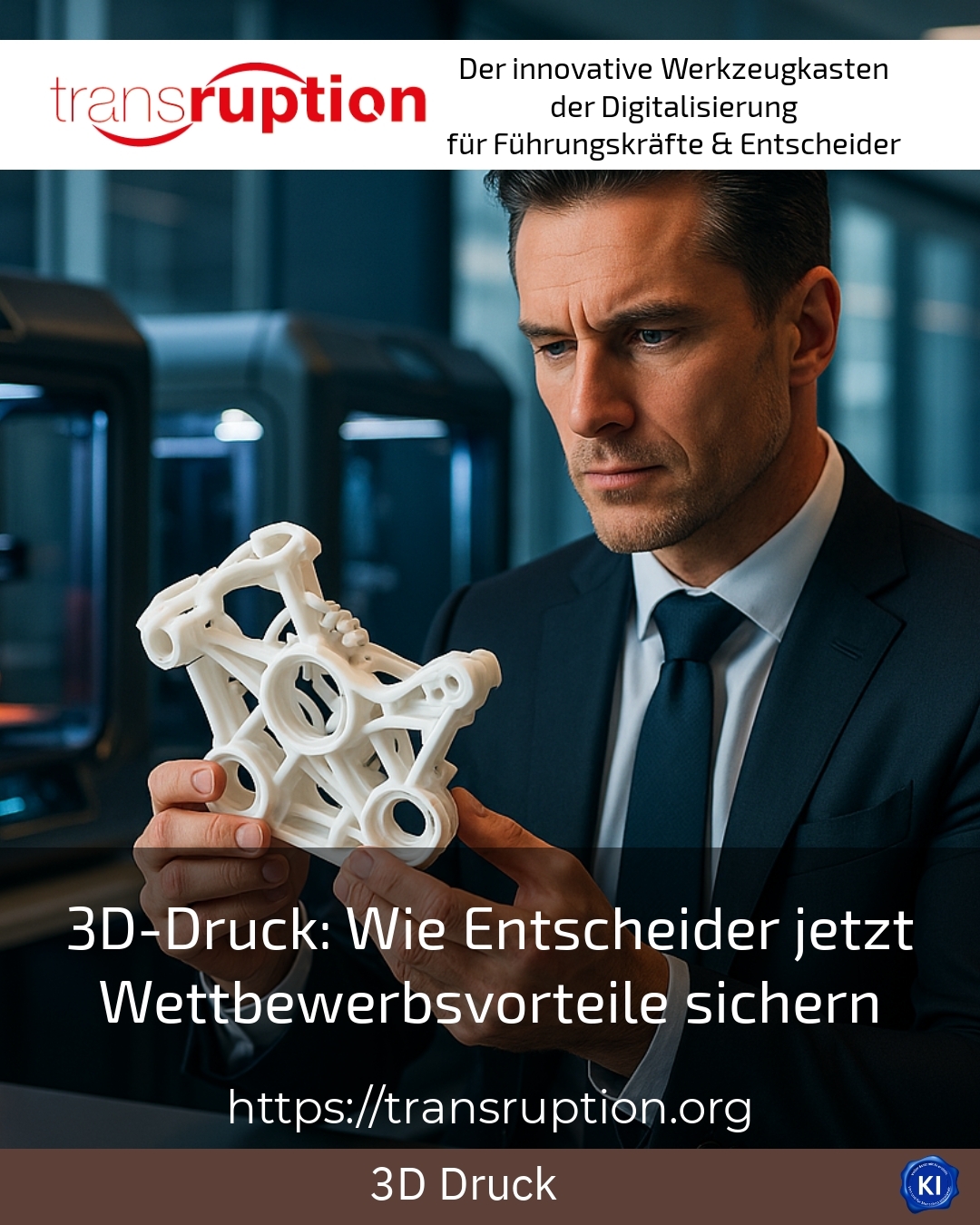More and more decision-makers are turning to 3D printing to make their companies more flexible, faster and more competitive. The technology opens up new avenues in product development and manufacturing. Many companies are using 3D printing to optimise processes and gain a clear competitive advantage. Flexibility, speed and customisation are just some of the benefits of additive manufacturing.
Flexibility and individualisation as a market opportunity
With 3D printing, products and components can be manufactured exactly according to customer requirements. Even small quantities or individual items are possible. This is particularly advantageous in the field of prostheses and the consumer goods industry. Here, companies can develop new business models and strengthen customer loyalty.
A practical example: a manufacturer of medical aids uses 3D printing to produce customised prostheses. Each product is customised to the patient's needs. Customisation is quick and cost-effective. More and more personalised products are also being created in the consumer goods sector. Another example is a company that offers customised jewellery. Customers can incorporate their wishes directly into the design.
Another example is a company that produces limited editions of promotional items. The individuality of the products and the flexibilisation of production are clear competitive advantages. Customers receive unique products that stand out from the crowd.
Rapid prototyping and shorter time-to-market
Prototypes in record time
With 3D printing, prototypes and sample parts can be produced in the shortest possible time. This speeds up product development and makes it possible to react more quickly to changes in the market. Start-ups and SMEs benefit in particular because they can develop innovative products even with limited resources.
An example from the automotive industry: a sports car manufacturer uses 3D printing to produce special model parts or for component tests in wind tunnels and assembly components for Formula 1 racing cars. The prototypes are printed and tested within a few days. Companies in the electronics sector also benefit from rapid prototype production. A smartphone manufacturer can quickly test and adapt new designs.
Another example is a company that develops medical devices. The prototypes are printed and tested directly in-house. This significantly shortens the development time.
3D printing as a driver of innovation in everyday operations
New business models and services
3D printing opens up new business models and services. Companies can realise individual customer wishes, optimise mould construction and produce promotional items or gifts. New niches are being occupied and pioneering positions taken.
An example from the food industry: a confectioner uses 3D printing to create customised cake decorations. Customers can incorporate their wishes directly into the design. More and more customised models are also being created in the field of architecture. Another example is a company that produces customised promotional items for corporate events. Customers receive unique products that stand out from the crowd.
Another example is a company that manufactures customised spare parts for machines. Customers receive the parts quickly and cost-effectively. Production takes place directly on site.
BEST PRACTICE at the customer (name hidden due to NDA contract) A medium-sized company from the mechanical engineering sector uses 3D printing to produce customised spare parts for machines. Customers receive the parts within a few days. Production takes place directly on site. This strengthens customer loyalty. The customisations are a clear competitive advantage. Customers receive unique products that stand out from the crowd.
Economic consideration and cost analysis in 3D printing
When it comes to the introduction of new technologies, economic considerations are one of the decisive factors. A comparison between traditional manufacturing processes and additive manufacturing quickly shows that 3D printing can be significantly cheaper overall. The decisive advantage of 3D printing is that no cost-intensive mould is required. Injection moulding tools are often very expensive and also cause long delivery times.
An example from the consumer goods industry: a toy manufacturer uses 3D printing to produce small batches. The unit prices are significantly cheaper than with traditional manufacturing processes. Companies in the electronics sector also benefit from cost-effective production. Another example is a company that produces customised promotional items for corporate events. Customers receive unique products that stand out from the crowd.
Another example is a company that manufactures customised spare parts for machines. Customers receive the parts quickly and cost-effectively. Production takes place directly on site.
My analysis
3D printing is a real competitive advantage for companies. The flexibility, speed and customisation are just some of the benefits of additive manufacturing. Companies can optimise their processes, develop new business models and gain a clear competitive advantage. The integration of 3D printing into existing processes is an important step towards long-term market survival.
Further links from the text above:
3D printing: competitive advantages for decision-makers and managers
Competitive advantage thanks to 3D printing
3D printing for small businesses: A competitive advantage
3D printing service providers provide a competitive advantage
New business areas and competitive advantages through 3D printers
3D printer manufacturer for the industry
3D printing in the company: Advantages, integration and cost analysis
Success strategy - 3D printing
For more information and if you have any questions, please contact Contact us or read more blog posts on the topic TRANSRUPTION here.
















